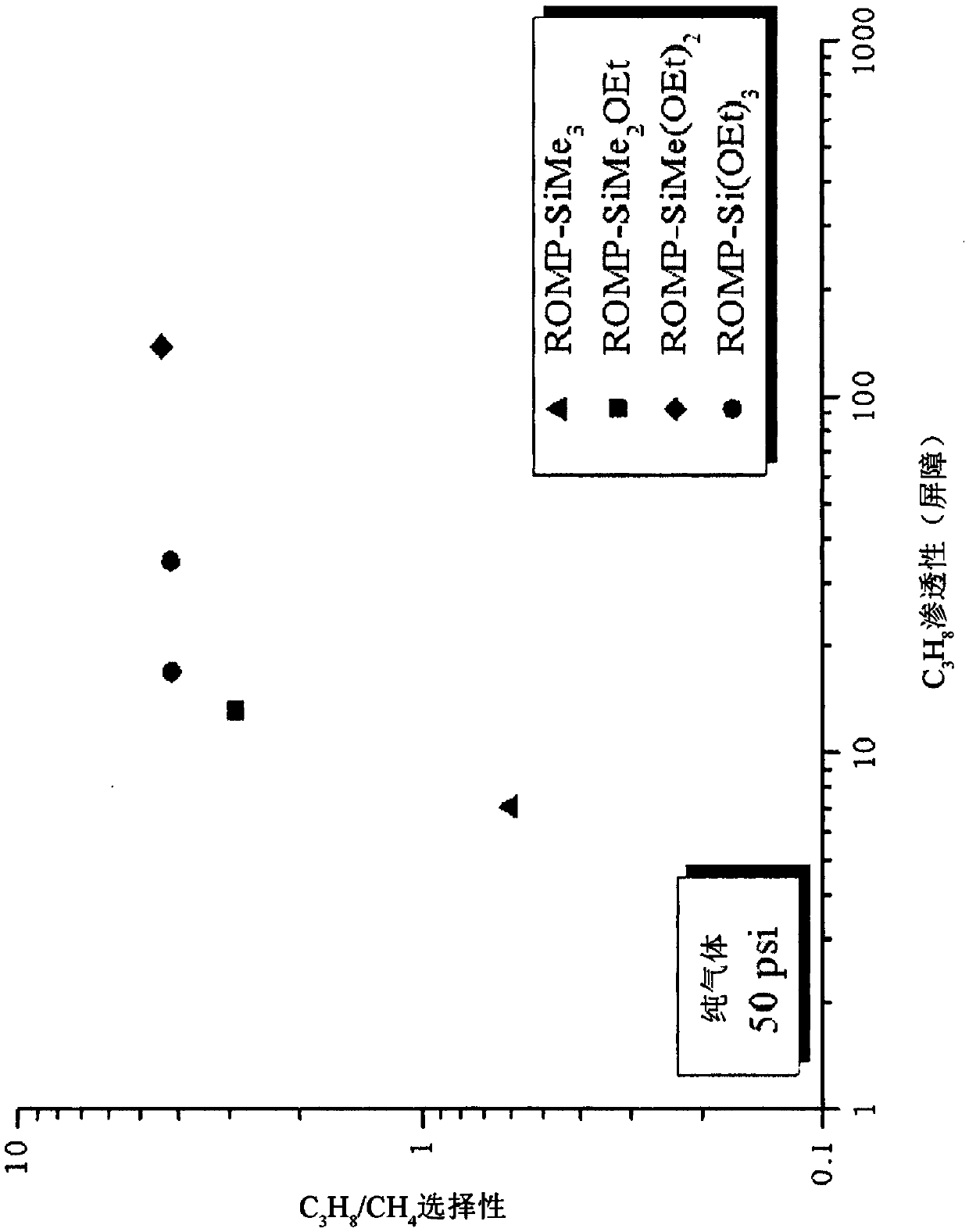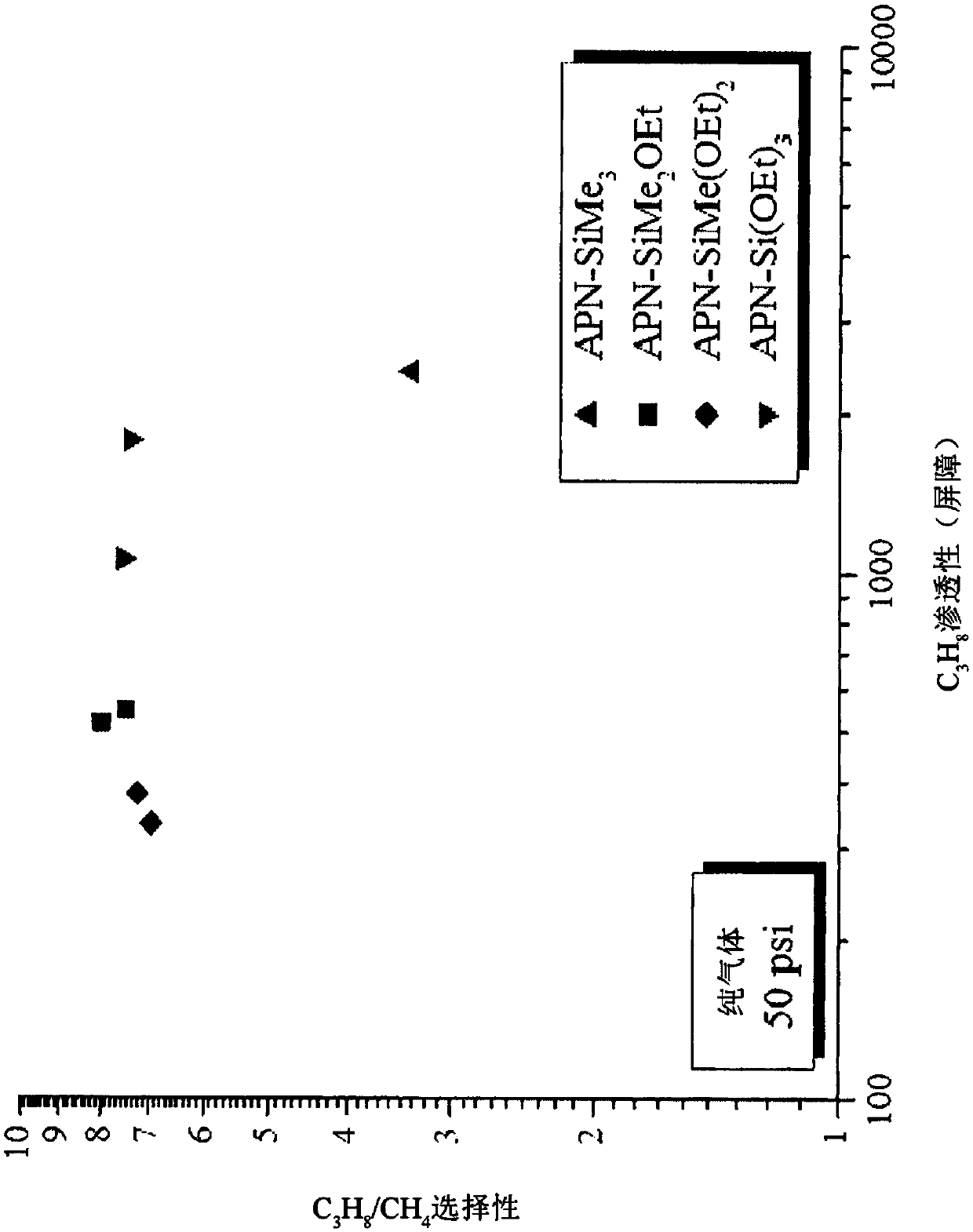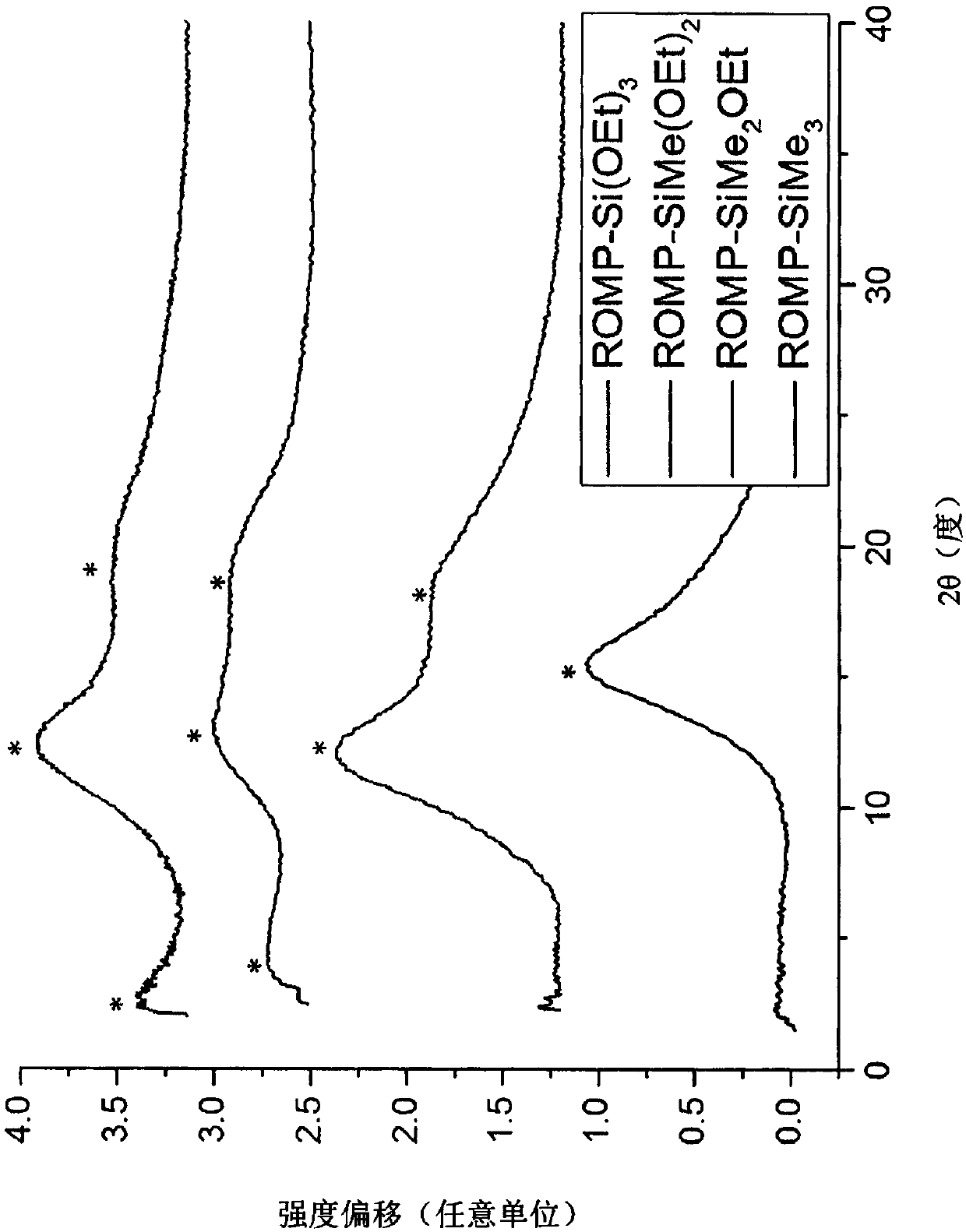Highly selective polynorbornene homopolymer membranes for natural gas upgrading
A technology of polynorbornene and norbornene, which is applied in the direction of climate sustainability, membrane, membrane technology, etc., and can solve problems such as low selectivity, performance decline, and permeability reduction
- Summary
- Abstract
- Description
- Claims
- Application Information
AI Technical Summary
Problems solved by technology
Method used
Image
Examples
example
[0059] Ring-opening metathesis polymerization of triethoxysilylnorbornene (ROMP-Si(OEt) 3 )synthesis:
[0060] To illustrate with reference to Reaction 1, in a glove box, 03.85 g of as received triethoxysilylnorbornene (0.05 molar (M), 1.51 mmol (mmol) )) and 29 mL of anhydrous deoxygenated toluene. In a separate vial, 2.5 milligrams (mg) of Grubbs first generation catalyst containing ruthenium (0.003 mmol) was dissolved in 2 mL of anhydrous toluene to create a stock catalyst solution. Finally, 1.0 mL of the catalyst solution was added to the stirred norbornene solution to initiate polymerization. After 24 hours, ethyl vinyl ether (0.431 mL, 4.51 mmol) was added to terminate the polymerization, and the solution was continued to stir. After an additional 24 hours, the solvent was removed under vacuum in the glove box until the sample volume was approximately 5 mL, at which point the sample became a viscous liquid. The viscous solution was precipitated dropwise into stirring...
PUM
| Property | Measurement | Unit |
|---|---|---|
| thickness | aaaaa | aaaaa |
Abstract
Description
Claims
Application Information
 Login to View More
Login to View More - R&D
- Intellectual Property
- Life Sciences
- Materials
- Tech Scout
- Unparalleled Data Quality
- Higher Quality Content
- 60% Fewer Hallucinations
Browse by: Latest US Patents, China's latest patents, Technical Efficacy Thesaurus, Application Domain, Technology Topic, Popular Technical Reports.
© 2025 PatSnap. All rights reserved.Legal|Privacy policy|Modern Slavery Act Transparency Statement|Sitemap|About US| Contact US: help@patsnap.com



